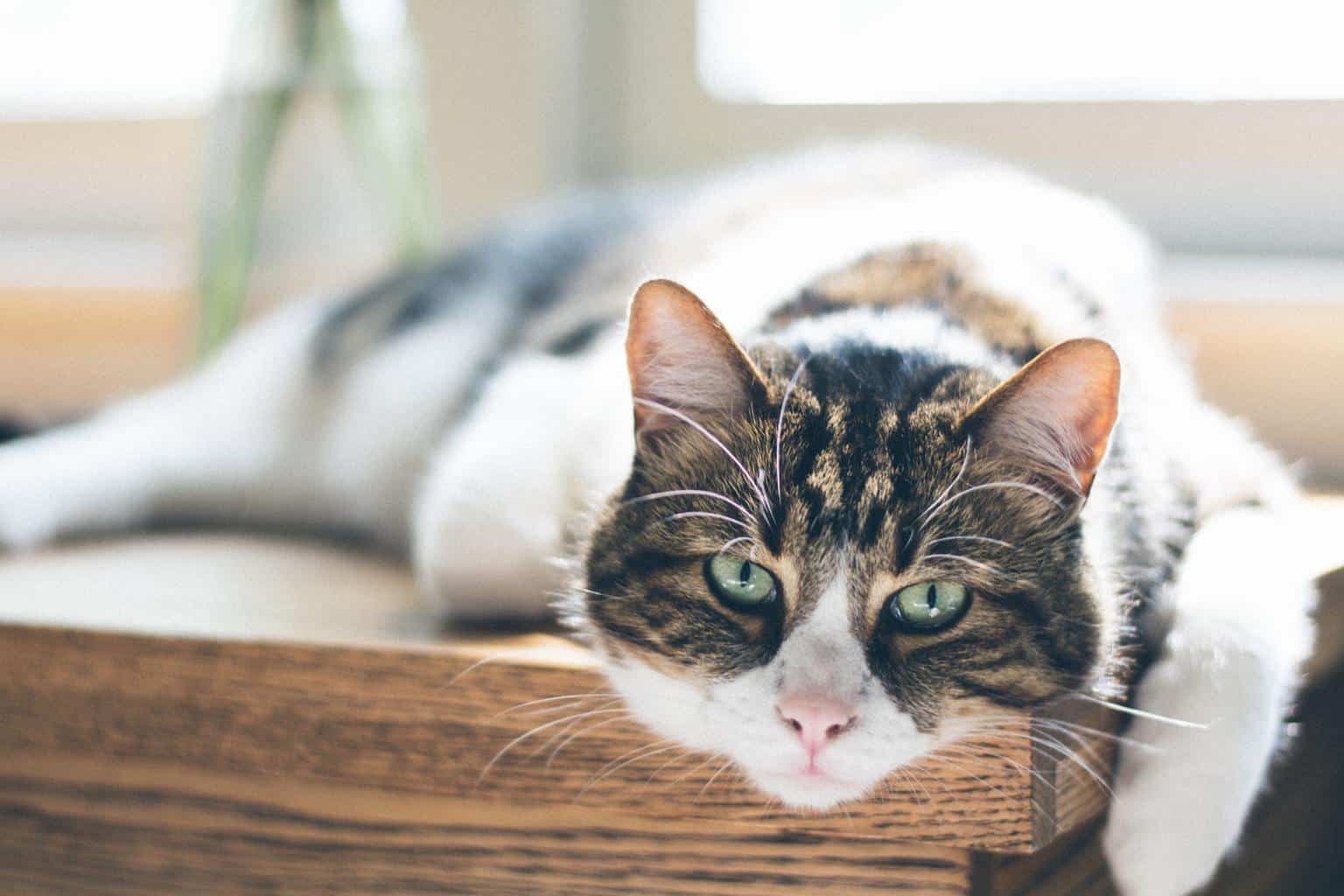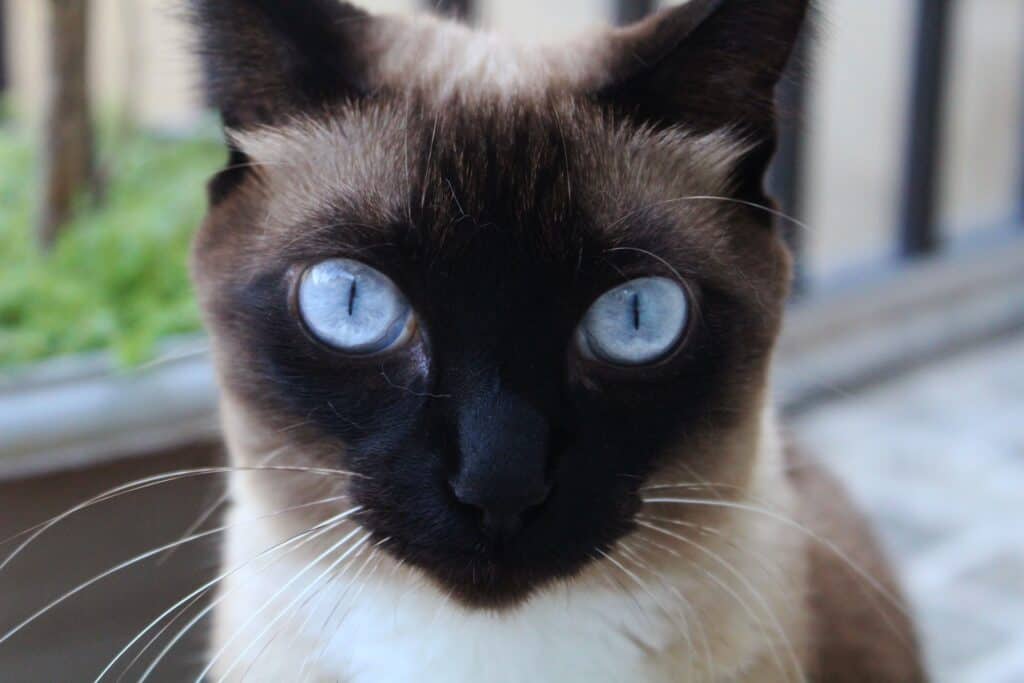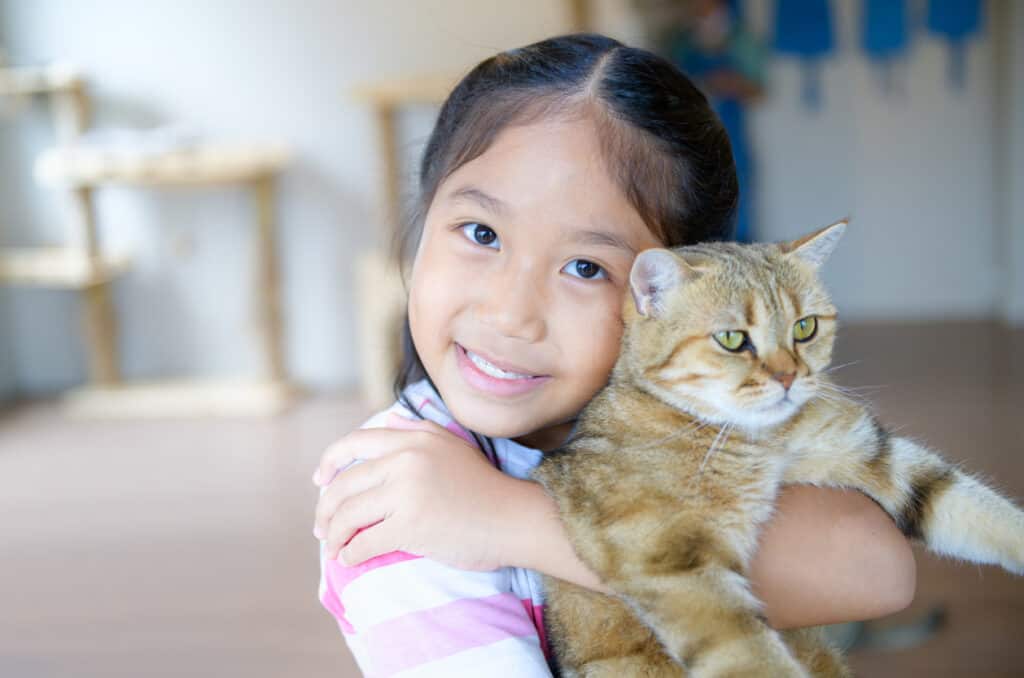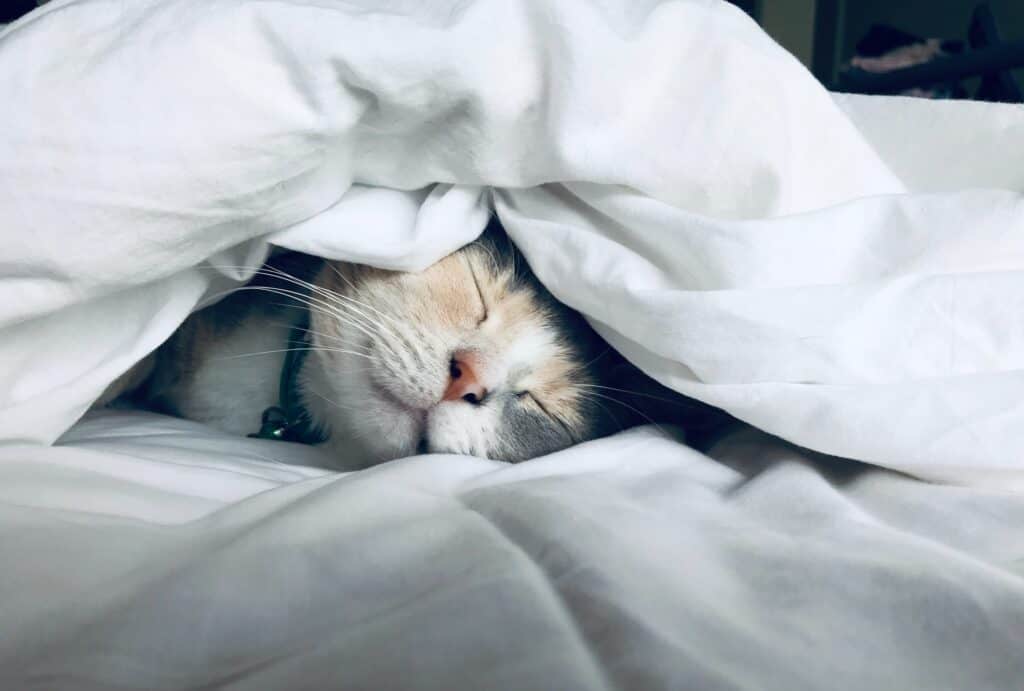Cats, after dogs, are among the most favorite pets. They come in many breeds, shapes, and sizes.
Some are ideal as lap cats due to their relatively small size; some cats can even fit inside the palm of your hand. Others can grow as large as a small dog.
We have measured all cats!
The characteristics of the different cat breeds are well documented, but their size and dimensions are often not elaborated on.
We have looked closely at several different breeds, collated data from various sources, and listed their average dimensions below.
While doing so, we’ll focus on domestic cat breeds. In other words, cats that are meant to live with people and would make a good lap cat or, at least, its size is suitable for a house cat.
Also, all dimensions mentioned in this article are for fully grown adult cats. You can consider your cat fully grown as of 18 months.
Click here to jump directly to the cat size chart.
How tall is an average cat?
When determining how tall a cat is, we measure its height from the ground to the base of the neck when standing up straight on all four paws. The head is excluded from the measurement because the thickness of the coat or weight can cause a larger head.
The average cat is about 10 inches/25cm tall.
The average cat is about 10 inches or 25cm tall. however, there are quite a few outliers in both directions. The world’s smallest cat, the Singapura, measures only a mere 7 inches/17 cm in height, whereas the largest cat, the Main Coon, tops out at 13-16 inches or 33-40 cm tall.
What is the length of an average cat?
When measured from the tip of the nose to the base of the tail (excluding the tail), the average cat length is about 18 inches/45cm.
How to measure a cat?
Measuring a cat’s height
Measuring a cat’s length
Measuring the tail or not?
How to weigh a cat?
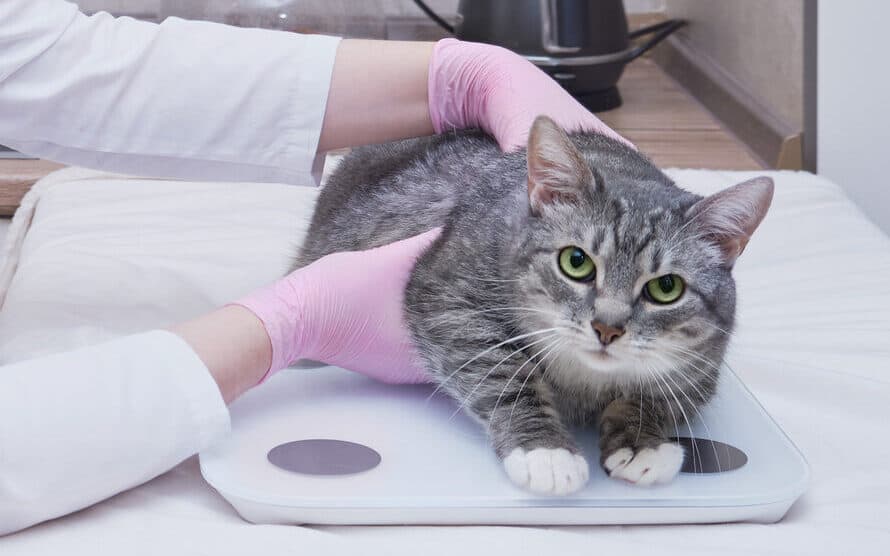
What is the average weight of a cat?
There is some variation in house cats’ weight, but as a rule of thumb, their average weight should be around 10 pounds (4.5 Kg).
Many cats are lighter and smaller than that; think about the Devon Rex with only about 6-9 pounds or the small Singapura, weighing in at about 4-8 pounds.
On the other side of the spectrum, we have the Maine Coon coming in at a hefty 15-25 pounds or the Norwegian Forrest cat at 13-20 pounds.
What is a healthy weight for a cat?
A shocking fact is that a whopping 60% of all cats in the US are obese (source). This is a serious concern for their overall health. Although a chubby cat may look adorable, it causes illnesses like diabetes and joint issues.
Refer to the table below to assess whether your cat is at the correct weight. It would be best if your cat is in the middle of the range. Cats at the end or even outside the range should lose weight.
Remember that cats generally are prone to over-eating when fed too much. As cat parents, we are responsible for managing their food intake, as obesity in cats can bring various health issues as they grow older.
What is the smallest cat?
The smallest cat breed known to man is a little fellow that originated in one of the world’s smallest countries: Singapore, and is aptly named; The Singapura.
With its height of 6 and 8 inches (15-20cm), the Singapura is about half the size of the world’s largest cats. Together with its length of about 9-12 inches (23-30cm), excluding the tail, and a weight of about 4-8 lb (2-3.5kg), it easily fits in the palm of one’s hand.
The Singapura is a relatively rare cat breed, caused mainly by the fact that they are slow breeders, and the average litter size is only 2 or 3 kittens. Most breeders maintain a waiting list for interested owners to be.
Other small cat breeds are the Japanese Bobtail and the LaPerm.
What is the largest cat?
Like the saying that everything is bigger in the USA, the largest cat on our list is also native to the US, specifically from the state of Maine.
The largest cat or tallest breed is The Maine Coon. They are 10 to 16 inches tall on average (25-40cm), and with a body length of 19, up to 32 inches (48-81cm), excluding their tail, they top other large cat breeds like the Savannah and British Shorthair. An adult Maine Coon weighs between 15 and 25 lb (7-11.3kg).
How large is the average house cat? – Breed comparison
To give an overview of how the different breeds compare to each other, we have created the below table, listing the average cat height/tall (vertical), lengths excluding tail (horizontal), and weights for the most well-known cat breeds.
Keep in mind that these are based on averages. Outliers within the same breed are definitely possible and can be caused by factors—more on that below.
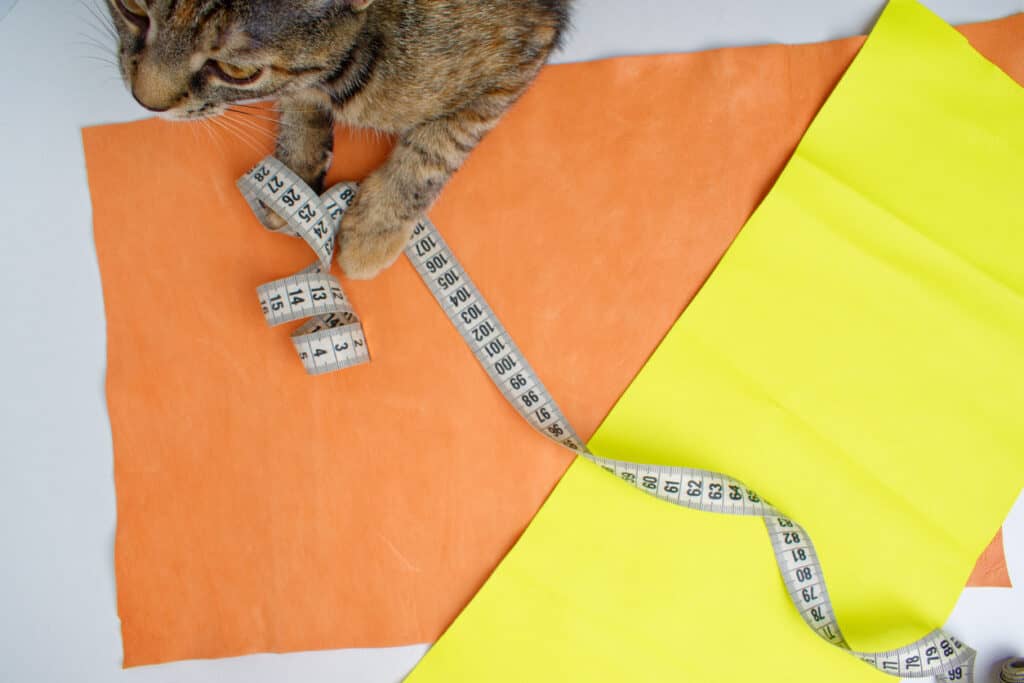
Cat size chart by breed
| Breed | Average cat height | Average cat length | Ideal cat weight |
|---|---|---|---|
| Abyssinian | 8″-10″ | 20-25cm | 12″-16″ | 30-41cm | 8-12lb | 3.6-5.4 kg |
| American Bobtail | 9”-10” | 23-25 cm | 17″ -19″ | 43-48 cm | 7-18 lb | 3.2-8.2 kg |
| American Curl | 9”-12” | 23-30 cm | 16″ -21″ | 41-53 cm | 5-10 lb | 2.3-4.5 kg |
| American Shorthair | 8”-10” | 20-25 cm | 12″ -15″ | 30-38 cm | 10-15 lb | 4.5-6.8 kg |
| American Wirehair | 8”-10″ | 20-25 cm | 11″ -13″ | 28-33 cm | 8-15 lb | 3.6-6.8 kg |
| Balinese | 8″-11″ | 20-28 cm | 14″ -18″ | 36-46 cm | 8-15 lb | 3.6-6.8 kg |
| Bengal | 8”-10″ | 20-25 cm | 14″ -18″ | 36-46 cm | 8-15 lb | 3.6-6.8 kg |
| Birman | 8”-10″ | 20-25 cm | 15”-18″ | 38-46 cm | 10-12 lb | 4.5-5.4 kg |
| Bombay | 11″ -14″ | 28-36 cm | 13″ -20″ | 33-56 cm | 6-11 lb | 2.7-5 kg |
| British Shorthair | 12″ -14″ | 30-46 cm | 22″ -25″ | 56-64 cm | 7-17 lb | 3.2-7.7 kg |
| Burmese | 10″ -12″ | 25-30 cm | 15″ -18″ | 38-46 cm | 6-14 lb | 2.7-6.4 kg |
| Chartreux | 9”-11” | 23-28 cm | 15″ -18″ | 38-46 cm | 9-11 lb | 4.1-5 kg |
| Cornish Rex | 8”-12” | 20-30 cm | 12″ -17″ | 30-43 cm | 5-10 lb | 2.3-4.5 kg |
| Devon Rex | 10″ -12″ | 25-30 cm | 15″ -18″ | 38-46 cm | 6-9 lb | 2.7-4.1 kg |
| Egyptian Mau | 8”-10″ | 20-25 cm | 12″ -15″ | 30-38 cm | 8-12 lb | 3.6-5.4 kg |
| European Burmese | 10″ -12″ | 25-30 cm | 15″ -18″ | 38-46 cm | 6-10 lb | 2.7-4.5 kg |
| Exotic Shorthair | 10″ -12″ | 25-30 cm | 16″ -19″ | 41-48 cm | 10-12 lb | 4.5-5.4 kg |
| Havana Brown | 9”-11″ | 23-28 cm | 12″ -15″ | 30-38 cm | 8-10 lb | 3.6-4.5 kg |
| Himalayan | 10″ -12″ | 25-30 cm | 17″ -19″ | 43-48 cm | 7-12 lb | 3.2-5.4 kg |
| Japanese Bobtail | 8”-9” | 20-23 cm | 13″ -15″ | 33-38 cm | 6-12 lb | 2.7-5.4 kg |
| Javanese | 9”-12” | 23-30 cm | 12″ -16″ | 30-41 cm | 5-10 lb | 2.3-4.5 kg |
| Korat | 10″ -12″ | 25-30 cm | 15″ -18″ | 38-46 cm | 6-10 lb | 2.7-4.5 kg |
| LaPerm | 6”-10” | 15-25 cm | 12″ -16″ | 30-41 cm | 6-10 lb | 2.7-4.5 kg |
| Maine Coon | 10”-16″ | 25-40 cm | 19″ -32″ | 48-81 cm | 15-25 lb | 7-11.3 kg |
| Manx | 10″ -12″ | 25-30 cm | 14″ -16″ | 36-41 cm | 8-12 lb | 3.6-5.4 kg |
| Norwegian Forest Cat | 9”-12” | 23-30 cm | 12″ -18″ | 30-46 cm | 13-20 lb | 5.9-9.1 kg |
| Ocicat | 9”-11” | 23-28 cm | 13″ -16″ | 33-41 cm | 6-14 lb | 2.7-6.4 kg |
| Oriental | 8”-10″ | 20-25 cm | 12″ -15″ | 30-38 cm | 5-10 lb | 2.3-4.5 kg |
| Oriental Shorthair | 9”-11″ | 23-28 cm | 11″ -14″ | 28-36 cm | 9-14 lb | 4.1-6.4 kg |
| Persian | 8”-10″ | 20-25 cm | 14.5”-17.5” | 37-44 cm | 7-12 lb | 3.2-5.4 kg |
| Peterbald | 8”-12” | 20-30 cm | 12”-17” | 30-43 cm | 6-12 lb | 2.7-5.4 kg |
| Pixie-bob | 9”-12” | 23-30 cm | 13”-17” | 33-43 cm | 8-14 lb | 3.6-6.4 kg |
| Ragamuffin | 9”-12” | 23-28 cm | 12”-18” | 30-46 cm | 8-20 lb | 3.6-9.1 kg |
| Ragdoll | 9”-11″ | 23-28 cm | 17”-21” | 43-53 cm | 8-20 lb | 3.6-9.1 kg |
| Russian Blue | 8″-10″ | 20-25 cm | 15″-18″ | 38-46 cm | 8-15 lb | 3.6-6.8 kg |
| Savannah | 13”-15” | 33-38 cm | 20”-22” | 51-56 cm | 12-25 lb | 5.4-11.3 kg |
| Scottish Fold | 8”-10″ | 20-25 cm | 14”-16” | 36-41 cm | 9-13 lb | 4.1-5.9 kg |
| Selkirk Rex | 9”-11” | 23-28 cm | 12”-15” | 30-38 cm | 9-16 lb | 4.1-7.3 kg |
| Siamese | 8”-10″ | 20-25 cm | 11.5”-14” | 29-36 cm | 8-10 lb | 3.6-4.5 kg |
| Siberian or Siberian Forest Cat | 9”-11″ | 23-28 cm | 15″ -18″ | 38-46 cm | 10-20 lb | 4.5-9.1 kg |
| Singapura | 6″ -8″ | 15-20 cm | 9”-12” | 23-30 cm | 4-8 lb | 1.8-3.6 kg |
| Somali | 8”-10″ | 20-25 cm | 11″ -14″ | 28-36 cm | 9-12 lb | 4.1-5.4 kg |
| Sphynx | 8”-10” | 20-25 cm | 13″ -15″ | 33-38 cm | 10-12 lb | 4.5-5.4 kg |
| Tonkinese | 8”-10″ | 20-25 cm | 12″ -15″ | 30-38 cm | 6-12 lb | 2.7-5.4 kg |
| Toyger | 9”-13” | 23-33 cm | 20″ -24″ | 51-61 cm | 10-15 lb | 4.5-6.8 kg |
| Turkish Angora | 8”-10″ | 20-25 cm | 14″ -16″ | 36-41 cm | 5-10 lb | 2.3-4.5 kg |
| Turkish Van | 9”-11″ | 23-28 cm | 14″ -17″ | 36-43 cm | 7-18 lb | 3.2-8.2 kg |
Looking for an overview of the average cat age per breed? See our table in this post
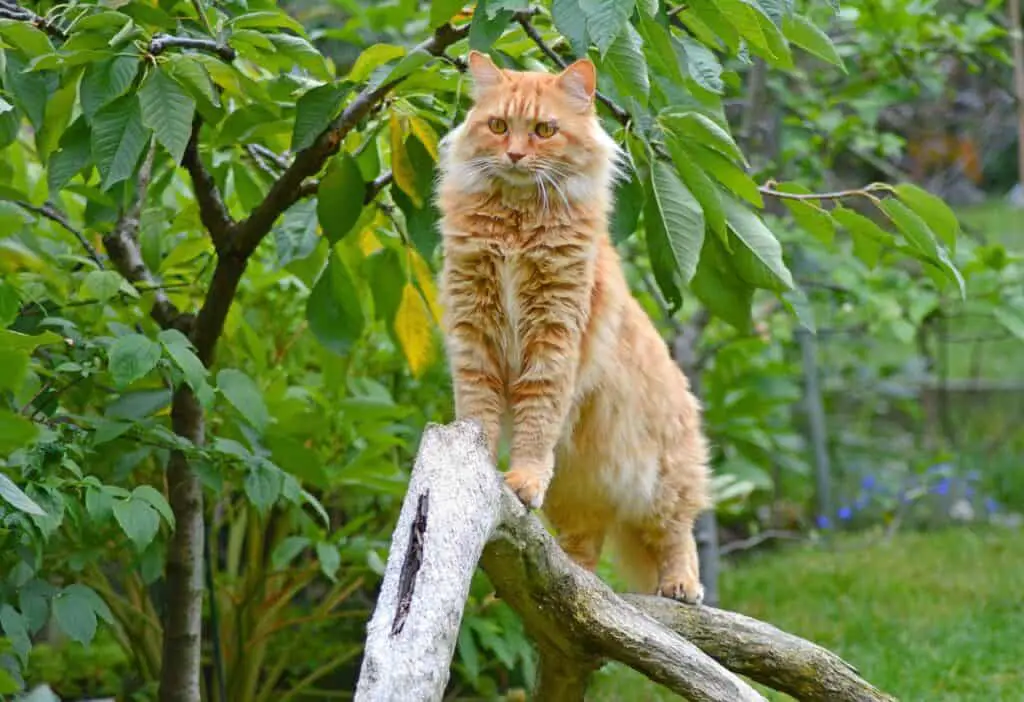
Average Cat Width
Although the height, length, and other measurements of a cat’s body are relatively well documented, it’s not easy to find the average width of a cat’s body.
Knowing the width of your cat can be important when installing a cat door or choosing a toy, like a cat tunnel for your kitty cat.
As a rule of thumb, the average width of a cat is between 5 and 8 inches (12.7 cm – 20.3 cm) and largely depends on the cat’s weight. The cat’s width is measured at the widest part of its body, which is its hip bone. In order to support the cat’s weight, heavier cats will have a wider hip.
What determines a cat’s size?
Primarily breed and genetics determine a cat’s size. Apart from these two hereditary factors, a cat’s size can vary between the upper and lower boundaries for their specific breed by, for example, its gender, living environment, age, health, and diet.
Below are several aspects of cat size. Don’t worry too much if your cat doesn’t perfectly match the above range of sizes given in the table. As long as it’s healthy, there should be little concern.
If you have concerns and want to check if your cat’s size is in line with a healthy normal cat size, you can always consult your vet.
Males versus females
Looking at the different measurements like height, length and weight, the males are usually in the higher end of the range versus females being smaller and lighter, towards the lower end.
As a general rule, the average male cat size is about 1-3 inches (2.5-7.5cm) larger than female cats, and the average female cat’s weight is about 1 to 3 pounds lighter than their male counterparts.
Age
It’s no secret that cats age fast in the first year of their life. In their growth cycle, kittens undergo several growth spurts, especially during the first year.
So, when do cats reach their full size?
Kittens reach sexual maturity after six months, and due to their high growth rate in the first year, they will have reached their adult size after 12 months.
For the next couple of months, they will continue to grow slower. However, this growth is more focused on muscle development and strengthening bones and joints and hence, takes place on the inside rather than externally.
Diet
The size of a specific cat breed has very little to no correlation with its diet. That means that if you want your kitten Maine Coon to remain small by underfeeding it, that will not work.
Neither will a small breed of cat grow larger by feeding it in excessive amounts.
Underfeeding animals is cruel and will seriously impact their health, development, and ultimately, their chance of survival. Overfeeding will result in obesity which is just as unhealthy for cats as it is for humans.
Although there is some correlation to the availability of good and nutritious food in the right quantities and growth, the bottom line is that malnutrition will cause cats to grow up weaker and less healthy, not necessarily smaller, and vice-versa for small cats that over-eat.
Look at our article for an overview of cats’ recommended daily calorie intake, or use the calorie calculator for cats here to calculate your cat’s ideal daily calorie intake.
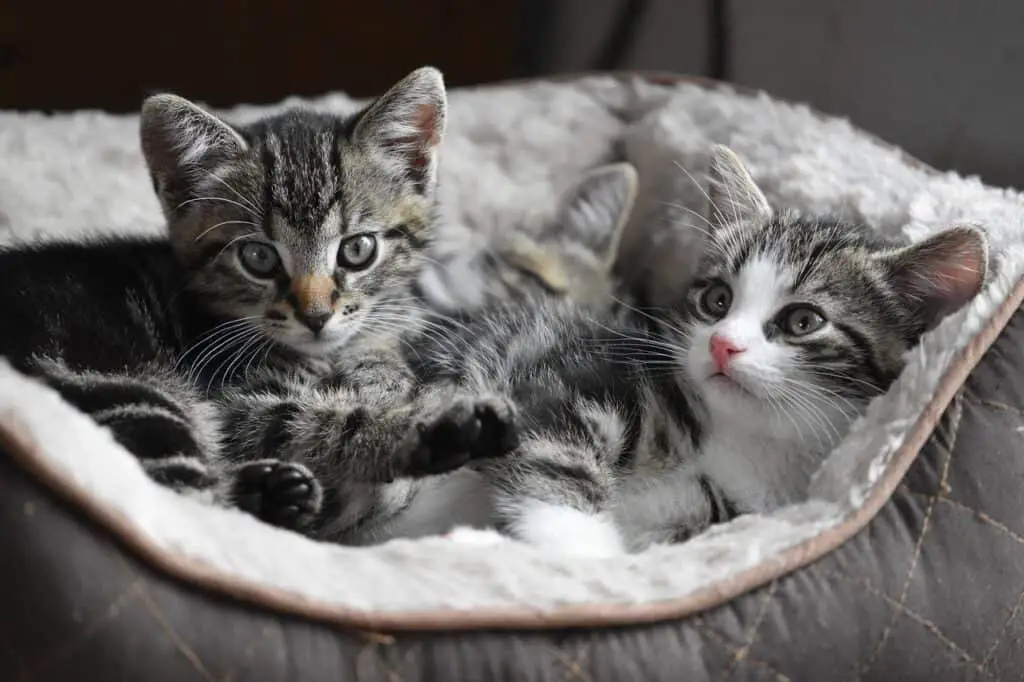
Pregnancy and nursing
On the other hand, the nutrition cats get from their mother during the first couple of months or even the first year is essential in supporting their growth.
Firstly, before breeding, the mother-to-be should be well fed and be healthy not to risk giving birth to underweight kittens. Pregnant cats must receive good nutrition with a high fat component to store plenty of energy to stay healthy during the pregnancy.
After giving birth, during the nursing period, the mother needs a variety of nutritional elements containing high energy, high protein, and sufficient calcium and vitamin intake to give her litter all the nutrients they need to grow up healthy and strong.
Spaying and neutering
It was once believed that early neutering of cats (before seven months of age) would impact their growth negatively and that, as a result, neutered kittens (or puppies, for that matter) would be smaller than their un-neutered counterparts.
According to research done by several sources referenced here, early age neutering has no negative impact on a cat’s growth.
It may, however, slow down a cat’s metabolic rate, which, in turn, may cause them to gain weight.
Environmental factors that impact kitten growth
Several other environmental factors can influence a kitten’s development. For example, lousy hygiene will weaken the health of the mother and kittens, cause disease and impact growth, and a range of other health issues.
Also, stress and fear when cats grow up in an abusive household can cause hormonal imbalance, disturbing growth.
Does a kitten’s paw size determine Its Growth?
Many believe that one can estimate their adult size by looking at how large a puppy’s paws are with dogs. The jury is still out on whether or not paw size in puppies is an early indicator of a dog’s adult size.
For cats, however, there is no verified scientific evidence that the size of a kitten’s paws accurately predicts the cat’s size as an adult.
A kitten with large paws may end up being larger as an adult compared to the rest of the litter or not, or they may have extra fur on their paws or extra toes that make their paws look larger. None of this significantly impacts their growth or their size as an adult cat.
Love reading about cats?
You’ve come to the right place! Please have a look at our other cat content.
-
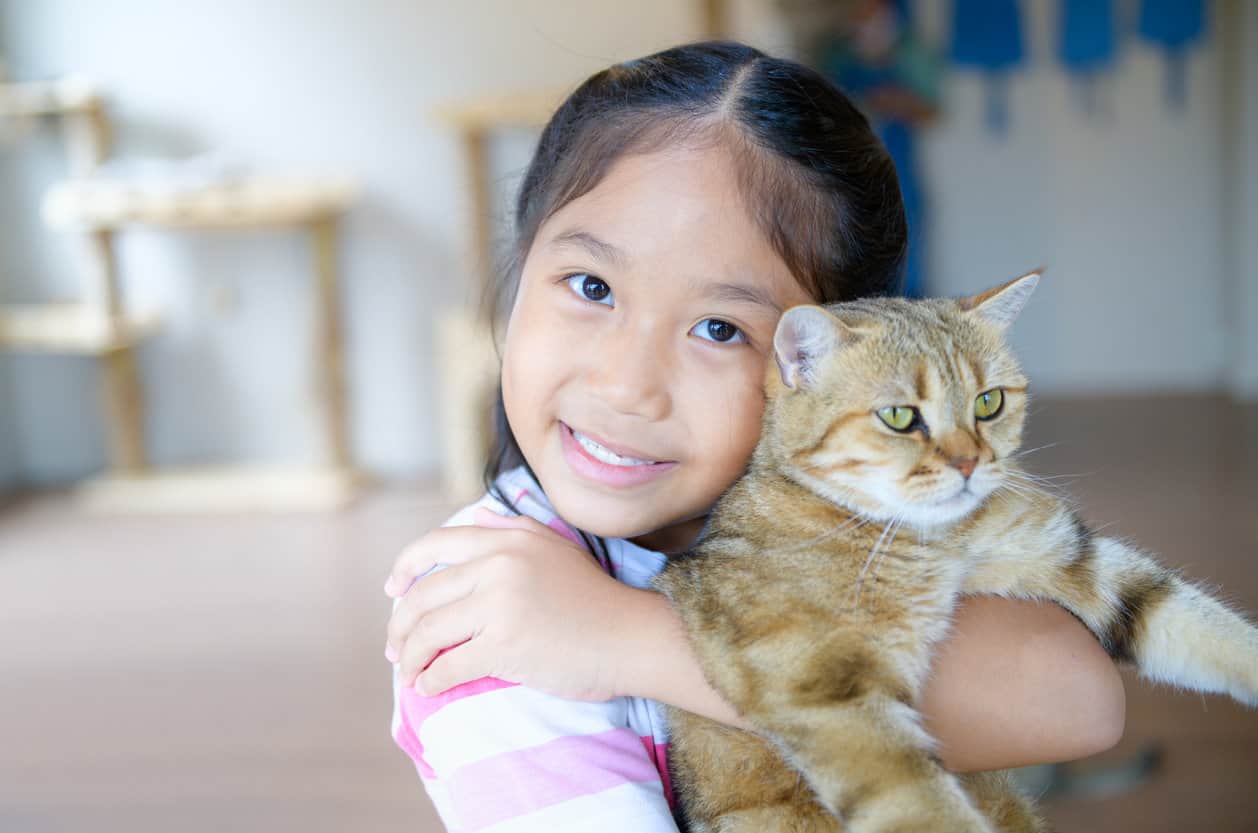
10 Ways to Make Your Cat Live Longer
The oldest cat to ever live passed away at the old age of 38. On average, household cats live between […]
-
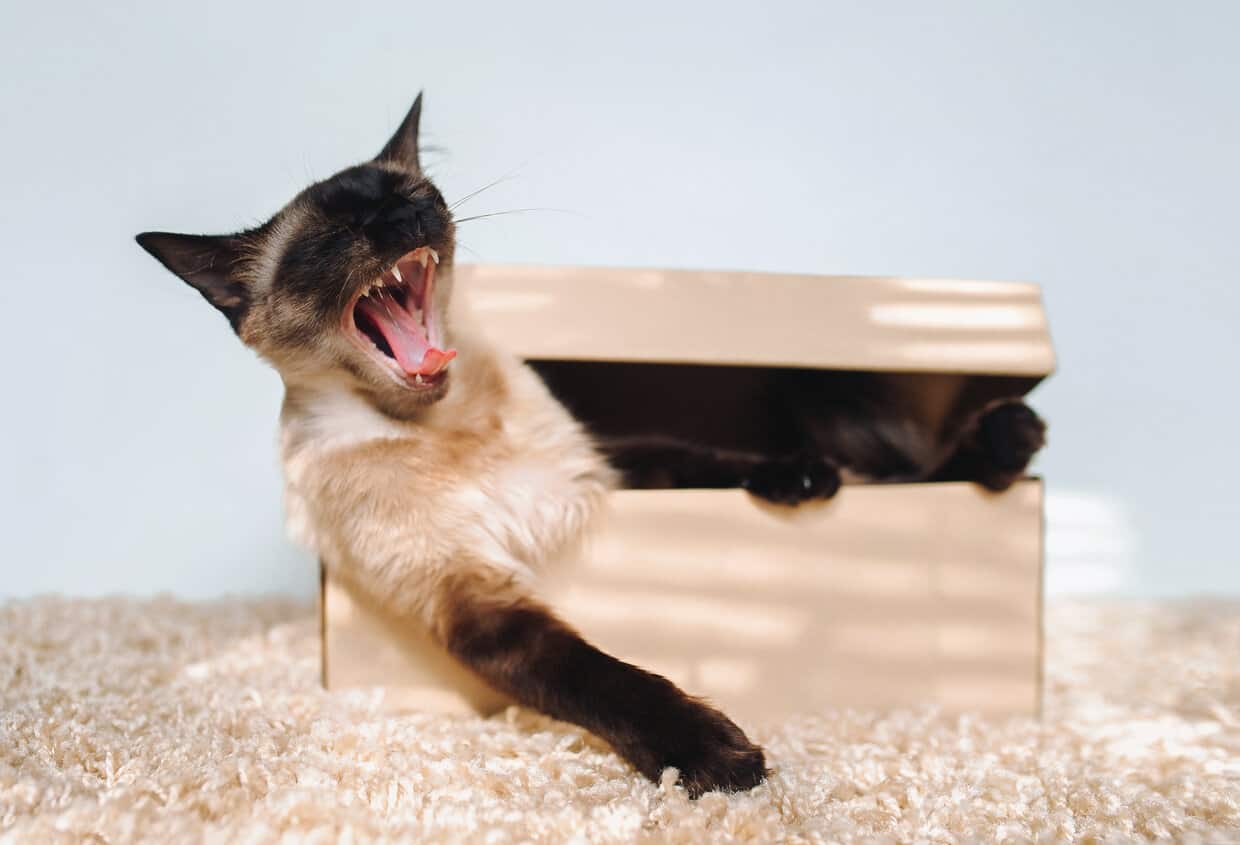
12 Reasons Why Siamese Cats Cry at Night
Siamese cats are a popular breed of cats that many people choose to have as pets. Perhaps you have heard […]
-
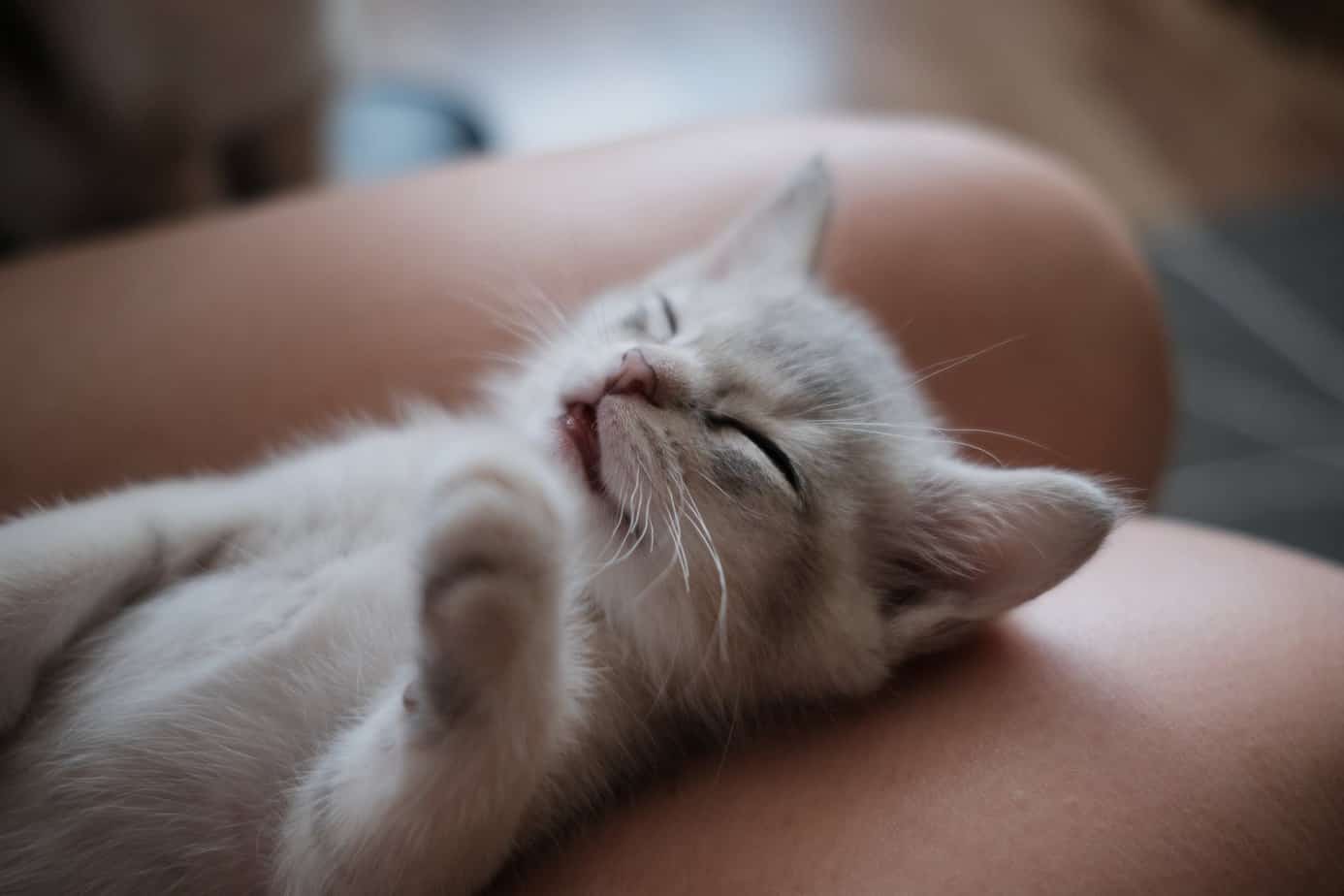
15 Incredible Ways That Cats Show Affection For Humans
Wondering how cats show their affection for humans? We have listed several incredible ways that cats are trying to show their love for us.

